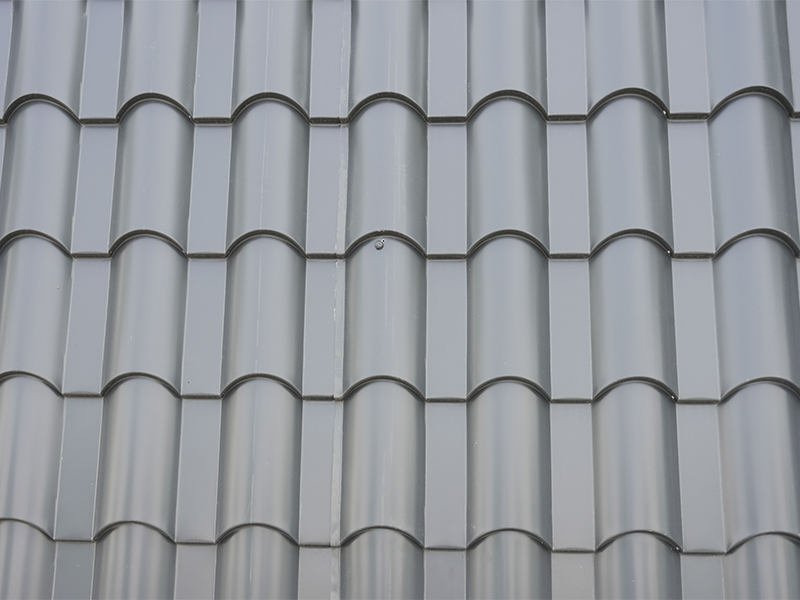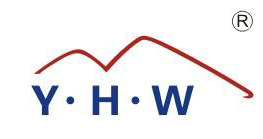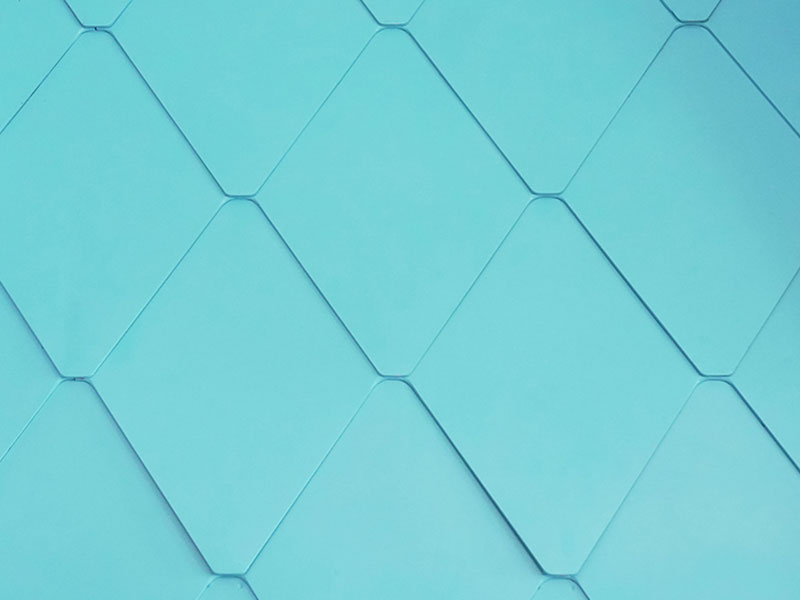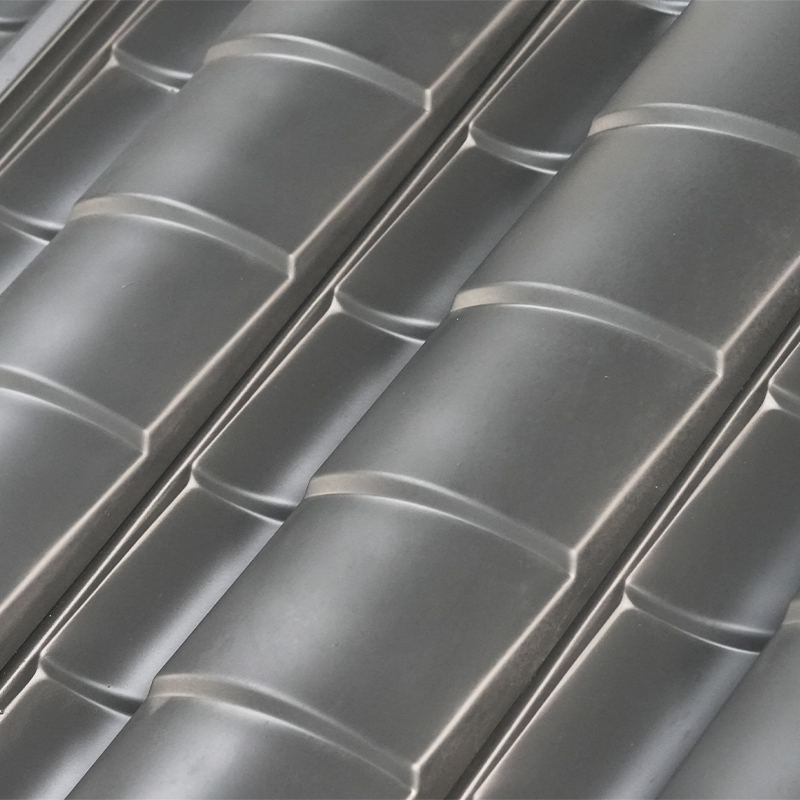In the pursuit of energy-efficient, climate-resilient construction, architects and builders are increasingly turning to advanced roofing materials that combine durability, aesthetics, and thermal performance. Among these, insulated aluminium roof tiles have emerged as a compelling solution — offering the sleek appearance of traditional metal roofing while integrating high-performance insulation to enhance energy conservation and indoor comfort.
These composite tiles consist of a lightweight aluminium outer shell bonded to a core of rigid insulating material such as polyurethane (PU), polyisocyanurate (PIR), or mineral wool. This layered structure not only provides excellent thermal resistance but also contributes to soundproofing, weather protection, and structural resilience. As global building codes tighten around energy efficiency and carbon neutrality, insulated aluminium roof tiles are gaining traction as a forward-thinking alternative to conventional roofing systems.
This article explores the technological evolution, functional benefits, design adaptability, and environmental impact of insulated aluminium roof tiles, positioning them at the intersection of modern architectural innovation and sustainable development.
Technological Composition and Manufacturing Process
Insulated aluminium roof tiles are engineered composites designed to optimize both thermal performance and mechanical strength. Their typical construction includes:
Aluminium Outer Layer : Provides a durable, corrosion-resistant surface with a long service life. Available in a variety of finishes — from matte to metallic — it can mimic the look of slate, terracotta, or wood without the associated weight or maintenance.
Insulating Core : Usually composed of closed-cell foam or fibrous materials, this layer acts as a highly effective thermal barrier, reducing heat transfer between the exterior and interior environments.
Bonding Adhesives and Sealants : Structural adhesives ensure strong interlayer cohesion, while edge sealing prevents moisture ingress and enhances longevity.
Manufacturing processes often involve continuous lamination lines where metal sheets are coated, bonded to insulation cores, and cut into modular tile formats suitable for rapid installation.
Thermal Performance and Energy Efficiency
One of the most significant advantages of insulated aluminium roof tiles lies in their ability to mitigate heat gain and loss , making them particularly valuable in regions with extreme climates. Key thermal characteristics include:
High R-Value : Depending on the thickness and type of insulation used, these tiles can achieve R-values significantly higher than those of traditional metal, clay, or concrete roofing.
Low Thermal Bridging : The continuous insulation layer minimizes cold or hot spots, preventing condensation and improving indoor air quality.
Reflective Surface Properties : Aluminium’s inherent reflectivity helps reduce solar heat absorption, contributing to lower cooling loads in warm climates.
Passive Cooling Potential : When combined with ventilated roof cavities, these tiles support natural airflow, further enhancing thermal regulation.
By reducing reliance on mechanical heating and cooling systems, insulated aluminium roof tiles contribute directly to lower energy consumption and operational costs — aligning with net-zero building goals.
Durability and Environmental Resilience
Beyond thermal benefits, these tiles offer robust performance under a range of environmental stressors:
Corrosion Resistance : Aluminium naturally forms a protective oxide layer, making it resistant to rust and degradation even in coastal or industrial zones.
Wind and Impact Resistance : Interlocking tile designs and reinforced edges provide superior resistance to wind uplift and hail damage.
Fire Performance : Many insulated aluminium roof tiles meet Class A fire ratings due to the non-combustible nature of aluminium and the use of fire-retardant insulation cores.
Longevity : With minimal maintenance requirements and lifespans exceeding 40–50 years, these tiles represent a durable, cost-effective roofing solution.
Their ability to withstand harsh weather conditions makes them ideal for use in both residential and commercial buildings located in extreme climatic zones.
Integration with Modern Architectural Design
Far from being limited to utilitarian applications, insulated aluminium roof tiles offer considerable aesthetic flexibility:
Design Versatility : Available in multiple profiles, colors, and textures, they can be tailored to complement contemporary, minimalist, or traditional architectural styles.
Slim Profile : Their lightweight and thin construction allow for seamless integration with modern façade systems and curved rooflines.

Compatibility with Solar Integration : Some manufacturers now incorporate pre-engineered channels or mounting brackets for photovoltaic panels, facilitating the adoption of renewable energy solutions.
Acoustic Performance : The insulating core also dampens external noise from rain, wind, or urban environments, enhancing indoor acoustic comfort.
Architects and developers are increasingly specifying these tiles for eco-friendly housing projects, green commercial buildings, and retrofit initiatives seeking both functionality and visual appeal.
Sustainability and Lifecycle Considerations
As sustainability becomes central to building design, insulated aluminium roof tiles align well with circular economy principles and green certification standards such as LEED, BREEAM, and WELL:
Recyclability : Aluminium is infinitely recyclable without loss of quality, reducing landfill waste and resource depletion.
Energy-Efficient Production : Advances in coil coating and insulation manufacturing have lowered the embodied energy of these tiles over recent decades.
Reduced HVAC Demand : Lower heating and cooling needs translate into reduced greenhouse gas emissions over the building’s operational life.
Minimal Maintenance : Unlike asphalt shingles or wooden shakes, these tiles do not require frequent repairs or replacement, further extending their environmental value.
When responsibly sourced and installed, insulated aluminium roof tiles serve as a key component of sustainable building envelopes — balancing performance, longevity, and ecological responsibility.
Installation and Cost-Benefit Analysis
While the initial investment in insulated aluminium roof tiles may be higher than that of conventional roofing materials, the long-term economic benefits often justify the expense:
Faster Installation : Modular tile formats and lightweight handling reduce labor time and scaffolding costs.
Lower Maintenance Costs : Minimal upkeep over decades reduces lifecycle expenses compared to materials prone to cracking, fading, or rotting.
Potential Incentives : Governments and utility providers in some regions offer rebates or tax credits for energy-efficient roofing systems, offsetting upfront costs.
Moreover, their compatibility with both new builds and re-roofing projects allows for flexible application across residential, institutional, and industrial settings.
Future Developments and Smart Roofing Integration
Looking ahead, the evolution of insulated aluminium roof tiles is likely to follow broader trends in smart and adaptive building technologies:
Phase Change Materials (PCMs) : Integration of materials within the insulation layer that absorb or release heat based on temperature fluctuations could further enhance thermal stability.
Photocatalytic Coatings : Surfaces that break down pollutants and improve air quality when exposed to sunlight are being explored for urban applications.
Integrated Sensors and Monitoring Systems : Embedded sensors could track temperature, humidity, and structural integrity in real time, supporting predictive maintenance.
Dynamic Reflectance Control : Research into electrochromic or thermochromic coatings that adjust reflectivity based on ambient conditions may enable next-generation adaptive roofing systems.
These innovations will continue to expand the role of insulated aluminium roof tiles beyond passive thermal control toward intelligent, responsive building envelopes.




 English
English русский
русский Español
Español عربى
عربى















